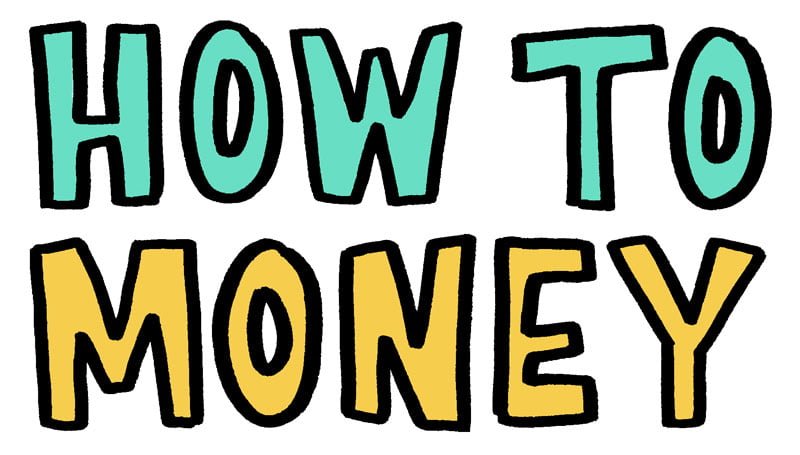If you were to strip away all of your luxuries and discretionary spending, what is the absolute minimum amount you can spend per month? That’s basically what a bare bones budget is…
Although we hope you never have to live this way, knowing your baseline cost of living can be a tremendous help in emergency planning.
In this post we’ll cover everything about bare bones budgets. How to create them, what expenses should be included or not, as well as examples of when they come in handy…
Why You Need a Bare Bones Budget
Survivalists and preppers get a bad wrap, but at the end of the day, they’re just trying to plan for the unknown! And while sometimes you can become your most creative when your back is against the wall, it’s hard to predict how we will react to disruptive events in our lives.
Bare bones budgets ensure that we have a plan for when financial disasters strike, like unexpected job loss, or should we find ourselves unable to work. Think of it like switching on low power mode when your phone is about to die. It’s a way to stretch your resources during a time when you aren’t bringing as much in as you’re used to.
What is a Bare Bones Budget?
A bare bones budget is a spending plan which only includes the bare necessities you need to get by should a financial disaster strike. If you find yourself with limited resources, things like your mortgage, rent and electric bills still need to be paid. And the more frivolous purchases like clothing and eating out can wait until your situation improves!
You might be wondering, “why do I need to do this now”? While it may be tempting to put this task off, compiling a bare bones budget is an essential personal finance task. It can help to inform how much you’ll need to put aside in an emergency fund. Knowing how much you need to get by can help you to set aside 3-6 months worth of expenses to carry you through tough times.
When You Need a Bare Bones Budget
A bare bones budget can be used in many situations to help you keep your finances on track!
While the BBB is mostly there in case you encounter hard financial times, it doesn’t have to exist only for times of doom and gloom. You could use a bare bones budget to completely slash your spending in order to accelerate your progress on a specific financial objective. For example, if you’re just a few months away from hitting your savings goal for a down payment, you could switch over to your bare bones budget to hit that all important number more quickly!
It could also be a confidence builder for those who create it! Knowing that your minimum expenses are much lower than your monthly budget can reassure you that you’ll be okay in case of an emergency. Plus, it could even give you the freedom to switch jobs or career paths. You could move to a field that’s less lucrative but that you’re more passionate about.
Just be sure not to plan on staying in bare bones budget mode for too long. BBB’s are not sustainable, and are not meant to be a long term solution for your finances. Instead, they are a temporary fix meant to carry you through tough times or through the final stretch of a savings goal.
What to Include in a Bare Bones Budget
To create your bare bones budget, you’ll need to compile a list of your absolutely essential expenses. Remember that this is a budget that you hopefully won’t have to use, so slash your regular spending to the point where you feel uncomfortable.
Everyone’s life looks different, but here are some common things to include/exclude from your bare bones budget…
Housing & Shelter
Housing is one thing that probably won’t change much between your regular budget and your BBB. If you’re nearing the end of a lease, moving to a cheaper place could make sense if you’re working with less cash. However, your housing costs would be difficult to change in a snap, so leave them as is in your BBB.
Food & Groceries
Even in lean times, you gotta eat!
While we do want you cutting your food budget for your bare bones budget, we don’t want you living off of ramen for months on end. There are plenty of ways to lower your food budget while still eating a healthy and nourishing diet.
The first thing that has to go from your food budget in harsh times is your “eating out” funds. While it’s totally fine to get takeout and go to restaurants if it’s something you enjoy, it is much cheaper to eat at home. Bonus points if you switch to a cheaper grocery store like Aldi or Trader Joes.
Utilities & Insurance
Another necessity you’ll need to include in your bare bones budget is your utilities. Costs like your gas bill, water bill, electric bill and internet likely won’t change, but you could use these tips to lower your monthly utilities!
- 8 Ways to Save Money on Your Gas Bill
- 13 Ways to Save Money on Electricity
- 9 Ways to Reduce Your Monthly Gas Bill
Insurance is still necessary, even in hard times. We always recommend shopping around for the best insurance rates annually. Even if you end up just staying with your current carrier, it’s worth the leg work to see if discounts are available elsewhere.
Transportation
Again, this category can be difficult to cut down and will likely stay the same in your bare bones budget. While it is possible to downsize from being a two car household to one, or to get out of a lease, it’s not super easy to do at a moment’s notice. If you can, pare it down, but you can leave it as is in your BBB.
On a related note, if you’ve ever thought about living without a car, that may be an option if you’re going through a prolonged hardship.
Debt Repayments
Even if you lose your job, you’ll still have to pay your debtors. If you don’t, you’re probably digging into a deeper financial hole.
So make sure to include debt payments in your bare bones budget. If you are unable to make payments, you can try calling your debtors to explain your situation. Try seeing if you can lower your payments temporarily.
What to Leave Out of a Bare Bones Budget
So now that we know what to include in your bare bones budget, it’s time to talk about what doesn’t make the cut. Hint: It’s pretty much “everything else” that’s not essential!
Streaming Services/Cable
This one hurts me as much as it hurts you…
While it might feel like a necessity, humans lived for thousands of years without streaming services and television! Luckily, this doesn’t necessarily mean you won’t have anything to watch!
In times like these, take advantage of as many freebies as you can. You can watch shows and movies for free using the Roku Channel, or digital apps connected to your library subscription!
Remember, if all goes well, you won’t ever have to use this budget. It’s just here as a safety precaution should you need it.
Vacations & Travel
Another category you’ll need to slash from your BBB is vacations and travel. For now, stick with free or cheap outings like hiking, trips to your local beach or park, or to the library!
If you’ve already partially paid for a trip, make sure not to fall for the “sunk cost fallacy.” The sunk cost fallacy refers to our inclination to see a pursuit through because we have already spent time or money on it. However, this isn’t always a good reason to continue spending money. In the case of a bare bones budget, it’s best to cut your losses altogether.
Clothing
Clothing can also be cut from your budget, with a few exceptions. If you’re tight on money, it’s a good idea to just wear what you already have.
If you have a few articles of clothing that you wear often and one of them becomes too worn out to continue wearing, it could be okay to replace those items.
And, if you have kids who are growing rapidly, you can still include a small budget for their clothing. Thrift stores and secondhand clothing websites like Ebay and Poshmark will be your best friend during this time.
Entertainment
Again, entertainment is something that should definitely be included in your normal budget. But unfortunately it has to go from your bare bones budget. This means no movies, shows, or restaurants until you can get your finances back in order.
In times like these, try to turn to some free or cheap hobbies for entertainment, like writing, drawing, playing board games, or playing music! You don’t need to spend a lot of money to have a good time with your friends. All it takes is a little added creativity.
Gyms & Club Memberships
Exercise is free for you now my friends!
If you switch over to your bare bones budget, it’s time to cut that $30-200 monthly expense from your books. Luckily, there are plenty of free ways to exercise. Even just walking for 30 minutes a day can have tremendously positive effects on your health.
One of the best ways to work out at home is to hit up YouTube. There are tons of personal trainers on there who post thousands of workouts that you can do for free.
Example of a Bare Bones Budget
A bare bones budget is going to look slightly different for everyone depending on your personal situation. But there are definitely going to be more similarities than differences. Here is an example of what a bare bones budget might look like for the average person.
Let’s say your typical monthly budget is about $5,000 per month… Now comparing that to the example bare bones budget above of only $3,078 per month, you can see that it’s almost $2,000 less!
If an emergency happened and you needed to save up $6k, it’s comforting to know that you could reduce your spending for 3 months in order to fully cover it, without totally derailing your financial life.
The Bottom Line:
Though it might be a little uncomfortable to create, a Bare Bones Budget is a great financial tool. It can protect you in times of financial struggle, help you to accelerate your progress towards a goal. It can even tell you more about your finances!
We encourage you to take a look at your BBB and how it stacks up against your normal budget. Is it possible to use your bare bones budget to create an “in between” budget that can help you to save more while still enjoying the things you love? You’ll never know until you try!
Well, that’s all we have to say about bare bones budgets. For more budgeting tips, be sure to check out these related posts.
Related Posts:




